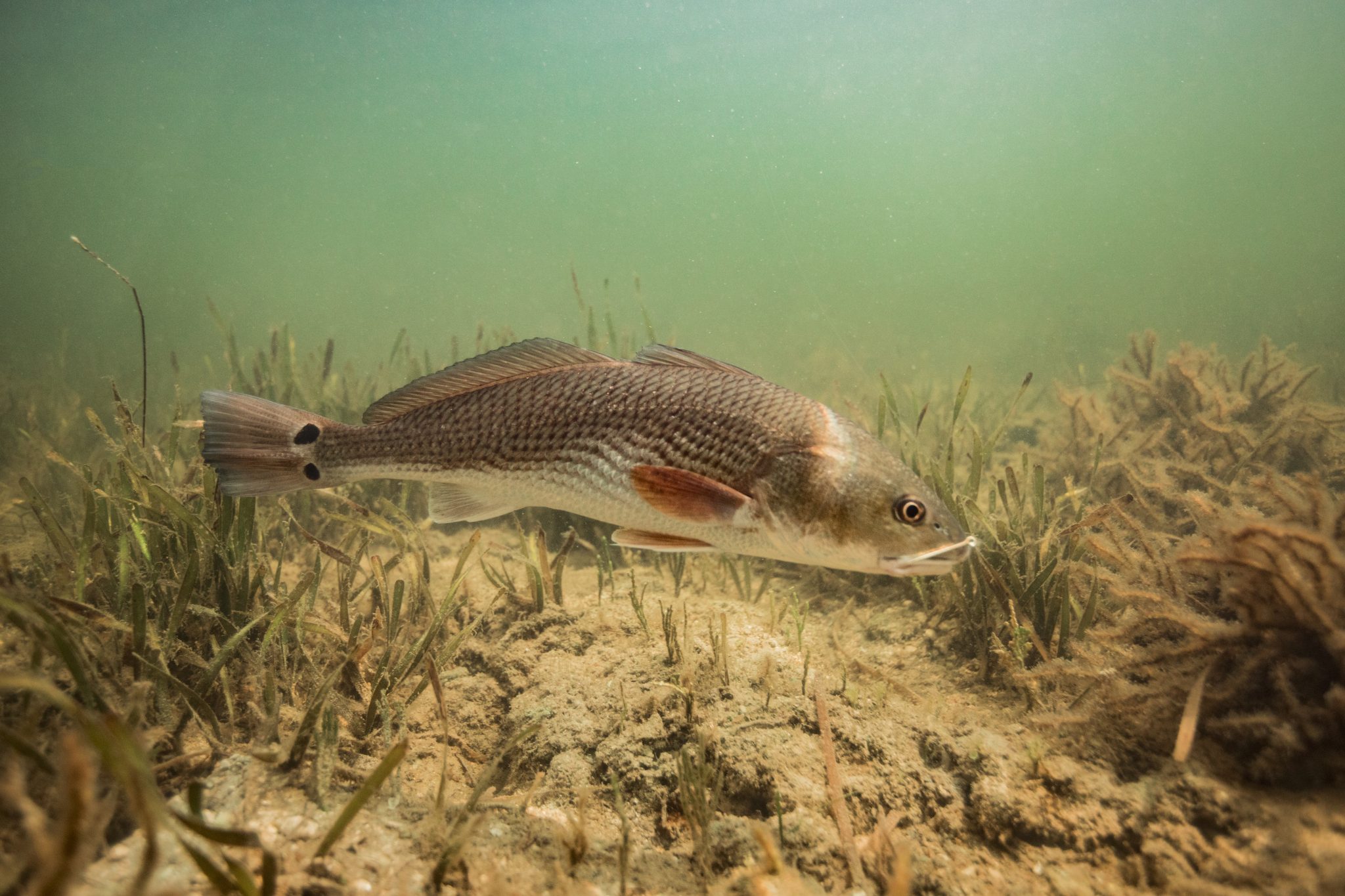Coastal Programs

Red drum, Sciaenops ocellatus, is one of 160 species of fish that scientists place in the drum family (Sciaenidae). Other drums familiar to Gulf Coast residents are the black drum, Atlantic croaker, spotted seatrout, white trout, and spot. Red drum, also called redfish, are found in the Atlantic from the Gulf of Maine to Key West, Florida, and along the Gulf Coast into northern Mexico.
During a single year in the mid 1980s commercial and recreational fishermen in the Gulf of Mexico harvested about 12.7 million pounds of redfish. By the late 1980s all harvest of red drum in federal waters was eliminated. The commercial harvest of redfish in Alabama waters has been banned since 1984. The annual Alabama recreational catch ranges from 80,000 to over 100,000 red drum.
Biology
Red drum spawn during the fall with a peak in September and October. However, spawning may begin as early as August and end as late as November. It is generally believed that spawning occurs in the offshore waters of the Gulf, although there is evidence of some inshore spawning in several high-salinity Florida estuaries.
When held under artificial conditions, laboratory fish have spawned numerous times in a three-month period. The duration and frequency of spawning in the wild is not known. Laboratory females have produced 2 to 2.8 million eggs in a single spawn. The average wild spawn is estimated to be 0.5 to 0.6 million eggs per female.
Male redfish in Florida may become sexually mature as early as age 1 and most are mature by age 3. Females become mature at about age 3 and most are mature by age 5. Research in Texas indicates that sexual maturity may occur later in the Western Gulf. Three-year-old fish are generally 26 to 28 inches in length while five-year-old fish are about 30 inches long.
Like many estuary-dependent species (shrimp, crab, spotted seatrout, etc.), recently hatched red drum find their way into the bays and bayous and remain there during their early lives. Alabama redfish appear to leave the inside, inshore waters between their first and second years (17 to 24 inches). Other states report that red drum remain in the estuary until their third or fourth years (27 to 30 inches). In either case, older fish move into the open Gulf and tend to stay there longer as they get older.
At times, redfish form large schools in the Gulf of Mexico. These schools are often associated with schools of other species such as blue runner or little tuna (bonita). Some of the larger redfish in these schools (greater than 38 inches) may be 30 years or older.
The small red drum in the estuaries feed on copepods and then move up to grass shrimp. As red drum grow larger, fish, shrimp, and crabs become part of their diet. One study showed that fish (menhaden and lizard fish) were more commonly eaten in the winter and spring while shrimp and crabs dominated the diet in summer and fall.
Management
The management of redfish is greatly influenced by the biology of the fish. The younger fish are found in state waters and thus are subject to state regulations while the larger fish and the schools may be found in either the offshore state waters (shore to three miles) or federal waters (three to 200 miles).
Most Gulf states, including Alabama, have length and bag limits for red drum and have designated red drum as game fish, meaning that fish caught within state waters cannot be bought or sold. Alabama currently allows anglers to keep three fish per day. Fish greater than 26 inches in length or less than 16 inches may not be harvested. However, one fish greater than 26 inches may be kept.
Redfish in federal waters are being managed under a Gulf of Mexico Fishery Management Council, Fishery Management Plan. Under the plan, no harvest (recreational or commercial) of red drum is allowed in the federal waters of the Gulf of Mexico. Federal protection of the offshore spawning schools combined with strict inshore state regulations has resulted in a healthier red drum population by most accounts.
Redfish Records
Because they grow rapidly to a large size, redfish are popular with sport fishermen. Twenty- to 30-pound fish are not uncommon and some grow even larger. The Alabama record is a 43-pound fish caught in 1982. The world’s record is a 94-pounder caught in North Carolina in 1984.
This work is partly a result of research sponsored by NOAA, Office of Sea Grant, Department of Commerce, Under Grant No. NA16RG2258. MASGP-05-025

